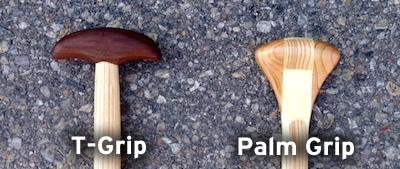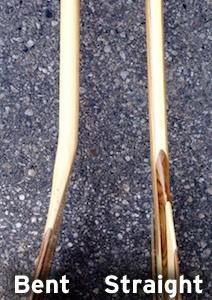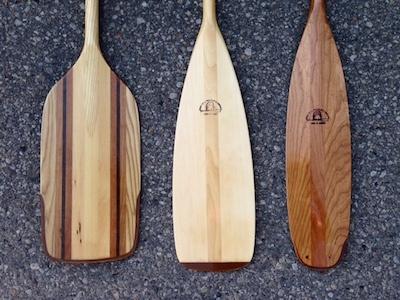Choosing the Correct Canoe Paddle
How to Size a Canoe Paddle
Using a paddle that is not the right size can be a frustrating and tiresome experience (new paddlers especially suffer from this affliction!) Choosing a paddle is not really rocket science. Paddles generally come in only 5 or 6 different sizes, usually sized in 2-3 inch increments and our staff are happy to help size you up in store.
Popular Sizing Techniques:
- Sit or kneel 6-8" above the floor and measure from the floor to your nose.
- Place your elbows at 90 degree angles, arms facing up with hands facing in. Measure the distance between your palms.
- Bow paddlers may often prefer a shorter paddle and stern paddlers a longer one. Bow paddlers sit on the floor and measure from floor to chest. Stern paddlers measure to your collar bone or nose.
- Bent shaft paddles are sized smaller. Sit on a chair and measure from top of chair to eye level.
Always add the blade length of the paddle you are considering to all of the above methods to determine the right length for you. Or, try our favourite instore method:
In the end no matter what technique you use it all comes down to how the paddle actually feels and performs for you. If you are trying to decide between a few paddle shapes or sizes consider contacting us to join in on one of our paddle demos where we can bring a paddle for you to try.
Canoe Paddle Materials
It is funny that many people are so shocked at how lightweight modern paddles are. No, you don't have to paddle with a whole tree - shaving off an ounce of weight here or there is important when you consider how many thousands of times you will lift your paddle throughout the course of your trip!
Wood Paddles
Wood paddles are definitely still the most popular. Though heavier than fiberglass or carbon options they flex and absorb shock well and are warmer to the touch in cold temperatures. Some wood paddles will have a fibreglass layer on the blade which increases both weight and durability.

The Grey Owl Voyageur - laminated wood
Fiberglass/Carbon Paddles
Fiberglass and Carbon paddles are generally very light and maintenance free. Manufacturers can create sharp and complex blade shapes with composite materials in comparison to wood. The weight savings in these paddles are considerable - your arms will thank you! - though you will find they are priced accordingly.

The Werner Bandit - fiberglass
Aluminum and Plastic
Aluminum shafted paddles with plastic blades make popular spares because they are tough and hard to damage. However we don't recommend them for extended use - they are cumbersome, have very little flex, and if you kink the aluminum shaft they are pretty much ruined.

The Carlisle Economy - aluminum/plastic
Palm Grip vs. T-Grip
The paddle you choose should feel comfortable in your hands. Most paddles feature either a palm or T shaped grip. Flatwater paddlers generally prefer a palm grip that fits smoothly in the hand over long distances. Whitewater paddlers often prefer a T shaped grip as you can grasp the paddle firmly between your fingers for increased control.

Shaft Diameter
Some paddle brands offer different shaft diameters. Most paddlers are comfortable with a general shaft size - but if you have particularly small hands consider a small diameter shaft that may allow you to grip more comfortably.
Straight Shaft vs. Bent Shaft
Bent shafted paddles are more ergonomic, and keep the blade vertical in the water during the most powerful part of your stroke. These are great for increasing efficiency on longer trips.

Blade Shapes
Wide Blades
Wider blades effectively displace more water per stroke but also require more power, meaning a greater energy expenditure throughout the day. Whitewater paddlers often prefer wide blades with flatter tips as they offer greater control in shallows or turbulent water.
Beavertail and Ottertail Blades
Touring paddlers in deeper waters may want to consider narrower blades like the beaver or otter tail shapes. These paddles require a higher cadence but will slice through the water beautifully. Stern paddlers may prefer a longer, narrower blade for steering while bow paddlers might benefit well from a little wider power face on the beavertail.

